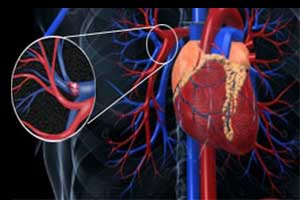The pharmacist’s Jekyll and Hyde behaviour: is absolute unity possible?
Charles Micallef
Introduction: the birth of a professional association based on idealism
The article titled, ‘Moviment vuċi għall-Ispiżjara’ which appeared in The Synapse earlier this year1 proved to be interesting. Mr Alfie Palmier, the leader of this movement, is of the opinion that despite the various specialities within the profession, all pharmacists share the same convictions (opinions). He further believes that with collaborative efforts, common goals can be achieved. Nice words indeed!
In this article, the author will delve in the dual nature of the pharmacist, focusing on community practice. There are two reasons why unionisation issues relating to a community pharmacists’ perspective will be discussed. First, this is the area where the author has most experience. Second, according to a report published in 2013 by the Pharmacy Council of Malta,2 the principal area of full-time practice was represented by 40% of pharmacists working in the community. Those working on a reduced hour basis and as part-timers were not included in this figure.
At the risk of sounding pessimistic, throughout his experience as a pharmacist and as a once active trade-unionist, the author always visualized a duality which can be called, ‘the Dr Jekyll and Mr Hyde behaviour’. This description stems from the basic fact that a pharmacist can pass through two major phases of transition in one’s career, that of an employee and that of an employer. Non-arguably, this means that the views and expectations are expected to change drastically throughout such distinct phases.
Examples that support the Jekyll and Hyde behaviour
The following examples illustrate the observations on the two distinguishable natures of the pharmacist. The first scenario takes us to the old issue of the liberalisation of permits for private pharmacies. A good number of pharmacist-employees used to complain against the tight regulations that had restricted them from freely opening new pharmacies and this was especially felt at a time when hundreds of applications were frozen. Somehow or other, some of them managed to establish their own pharmacies. As pharmacy owners employing other people they became pharmacist-employers. They now support a quasi-monopolistic attitude which, to a certain extent is understandable because no one wants to invest in something with a declining turnover due to nearby competitors.
The second example takes us to the issue of the pharmacy of your choice (POYC). I have personally witnessed several pharmacist-employees working in private pharmacies complaining about the extra responsibilities and the additional workloads that had been abruptly imposed on them. However, when these same pharmacists became employers, not surprisingly, they started praising the perceived success of this scheme. Again, it depends on one’s perspective. For example, in terms of revenue generation, they are correct in saying that the POYC scheme is a must for every private pharmacy.
Therefore, in view of these examples the author finds it hard to imagine how this new movement can be one voice for all pharmacists when there seems to be such diversity between the employee and employer status of the pharmacist. The following section will discuss aspects relating to contrasting circumstances in the pharmacist’s life which will be illustrated with respect to other professions.
Looking at other professions
Is this dual behaviour also evident in other professions? Let us take the medical profession as a start. Excluding private hospitals and sick leave verification companies where doctors may directly employ peers, the majority of doctors are either employed by government or work as private family doctors. The latter are mainly either self-employed or have group practices where they regulate their own pay. So, in most cases, doctors are not dependent on the generosity of other doctors for their remuneration.
In view of the above, when it comes to salary, doctors unlike pharmacists, do not tend to have opposing opinions; but is pay the only issue determining unity and strength of membership to an organisation? If we are to make parallel comparisons between doctors and pharmacists it is imperative to make equivalent comparisons. Whereas current regulations on the opening of new pharmacies can present challenges for single-union representation of pharmacists, doctors do not have restrictions on where to open hospitals and clinics. In view of this fact, this issue proves to undermine pharmacists’ unionisation on one hand and strengthen doctors’ unionisation on the other.
With the nursing profession, the story is much more straightforward. The absolute majority of nurses are employees and hence complete representation by one union is possible. Mr Palmier also tried to make lame comparisons with educators. Whether teachers work in state, church or private schools, generally they all share the same expectations such as salary increases, smaller class size and more helpers (basically, learning support assistants [LSAs]). These universal interests facilitate the representation of teachers by one union. Similar to medics who see patients on the side in the evening, teachers who conduct part-time tuition regulate their own remuneration.
In the article, Mr Palmier added that continued professional development is becoming mandatory in various European countries. If this were the case for Malta, community pharmacists would unfortunately have to attend such courses late in the evening after 7-8pm, whereas teachers, being practically all employees, would be lucky to have not only these short courses offered during normal school hours or during recesses, but also, according to the last electoral programme of the party now in government, a variety of sponsored Masters’ full-time programmes.
Furthermore, the collegiality of educators is evidenced by the fact that when teachers have disputes relating to conditions of work the recognised union may not think it twice to rope in the LSAs in their industrial actions. Contrastingly, the pride of pharmacists sometimes precludes the affiliation of pharmacy technicians in their unions. What is also admirable with practically all educators from various levels of teaching is their complete unity in using consistent and persuasive talk about their conditions of work.
Ambiguity galore
With reference to the interview with Mr Palmier in the last issue of The Synapse,3 the author found it very confusing. Mr Palmier’s vision is open to different interpretations. At first he seemed to be somehow convinced that he wants to establish a union when he used words like “… vision of unity …”, “… needs (of pharmacists that) were being ignored” and “… the need for a radical change”. In my opinion, knowing that the Chamber of Pharmacists has a record history of experience and well-established roots, an extreme shake (or “a radical change”) can only be achieved by challenging it through a new association as happened in the late nineties, when a new section within the Union Ħaddiema Magħqudin was established. Then Mr Palmier moderates himself by saying things like “… this movement is not a union …”, “… we stand stronger together”, “the Chamber is a legacy, it is our house and it has done a great deal of good”.
What exactly was Mr Palmier implying when he said, “… the baton had to be passed on to the younger generation of pharmacists …”? Was he referring to an internal change in leadership within the structure of the Chamber or to “the baton” being transferred to his new association? So, what does he actually have in mind? Apart from his sweet talk and mere publicity, he should tell us what is exactly meant by “… the moulding process that would bring about effective and tangible change”. Why is he reluctant to illustrate his views with specific examples?
Conclusion: some optimism despite diverging opinions and uncertainty
Union success is not measured with the ‘blind’ influx of members initially wanting to enrol into a new association in protest at all costs because they were tired of seeing the same union faces doing relatively little for them. Indeed, the strength of a union is seen in achieving the best packages in the shortest possible time frames for its members who usually present themselves with high expectations. So far we have seen the challenge in uniting pharmacists with diverging opinions due to the dual nature which has been amply explained.
We have also seen how Mr Palmier does not really know what he wants to achieve. Should he further establish his independent movement and continue strengthening his position to eventually acquire official recognition (he is proud to have acquired a good number of votes), or amalgamate with the Chamber (or Kamra, as they call it nowadays) and take over internally (“… the Chamber understands the need for inclusion”)?
On a positive note however, competition is always healthy. Therefore, even if the Moviment Vuċi għall-Ispiżjara does not leave a significant impact on the lives of most pharmacists, I am confident that it would still act as a stimulant for the legitimate unions to start listening to the pleas of all members and non-members. Hence, some good will always come out.
Finally, this account was only based on personal experience and observations. Even if reliable research one day confirms the theory of the pharmacist’s Jekyll and Hyde behaviour, one should always exert caution in making generalisations.
References
1. Palmier A. Moviment Vuċi għall-Ispiżjara. The Synapse. 2015;14(2):9. Available from: thesynapse.eu/index.php/ts-mags/2015
2. Pharmacy Council of Malta. Annual Report. 2013. Available from: health.gov.mt/en/regcounc/pharmcouncil/Pages/Annual-Reports.aspx
3. “For years many pharmacists felt that their needs were being ignored.” The Synapse. 2015;14(4):26,27. Available from: thesynapse.eu/index.php/ts-mags/2015



